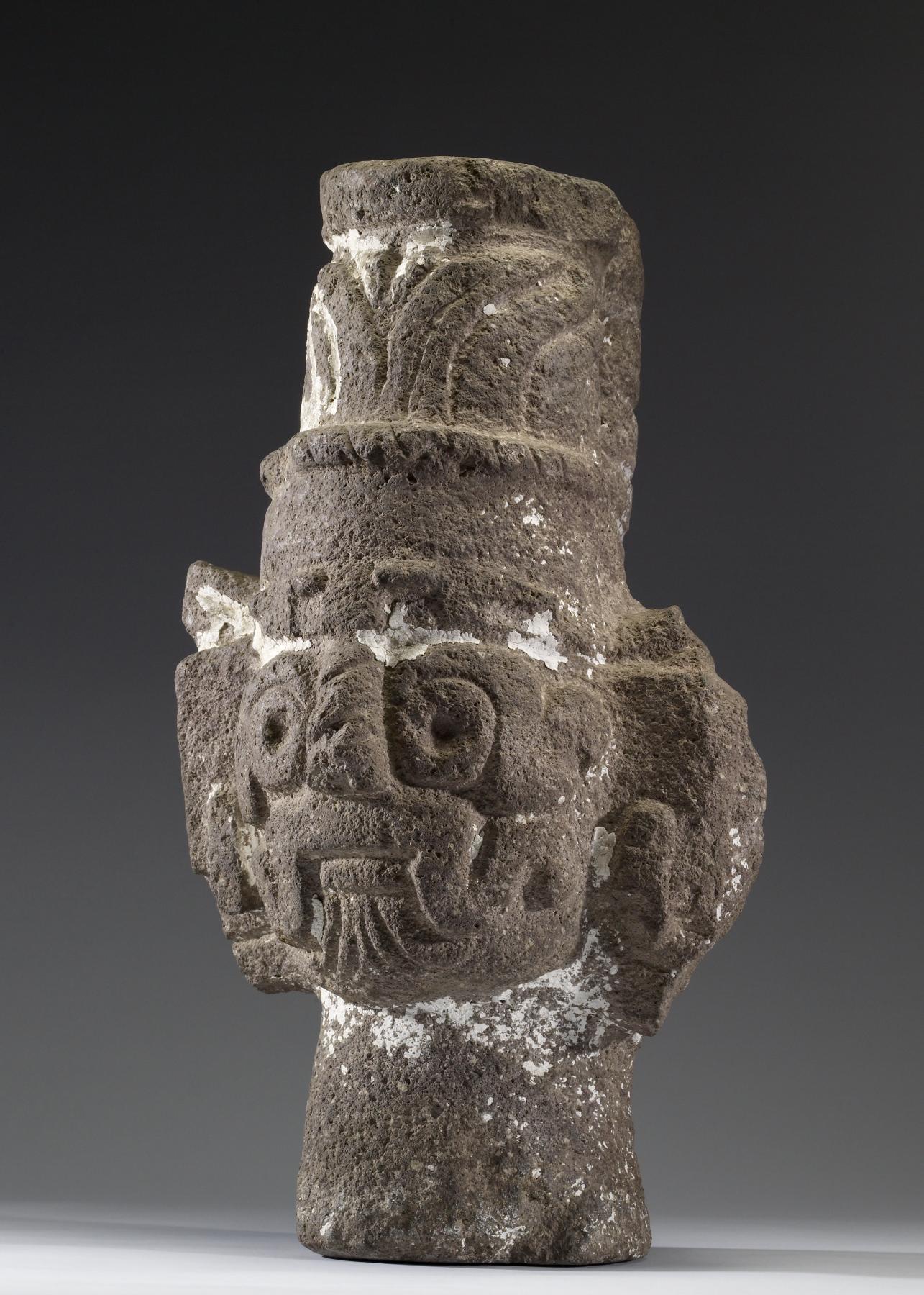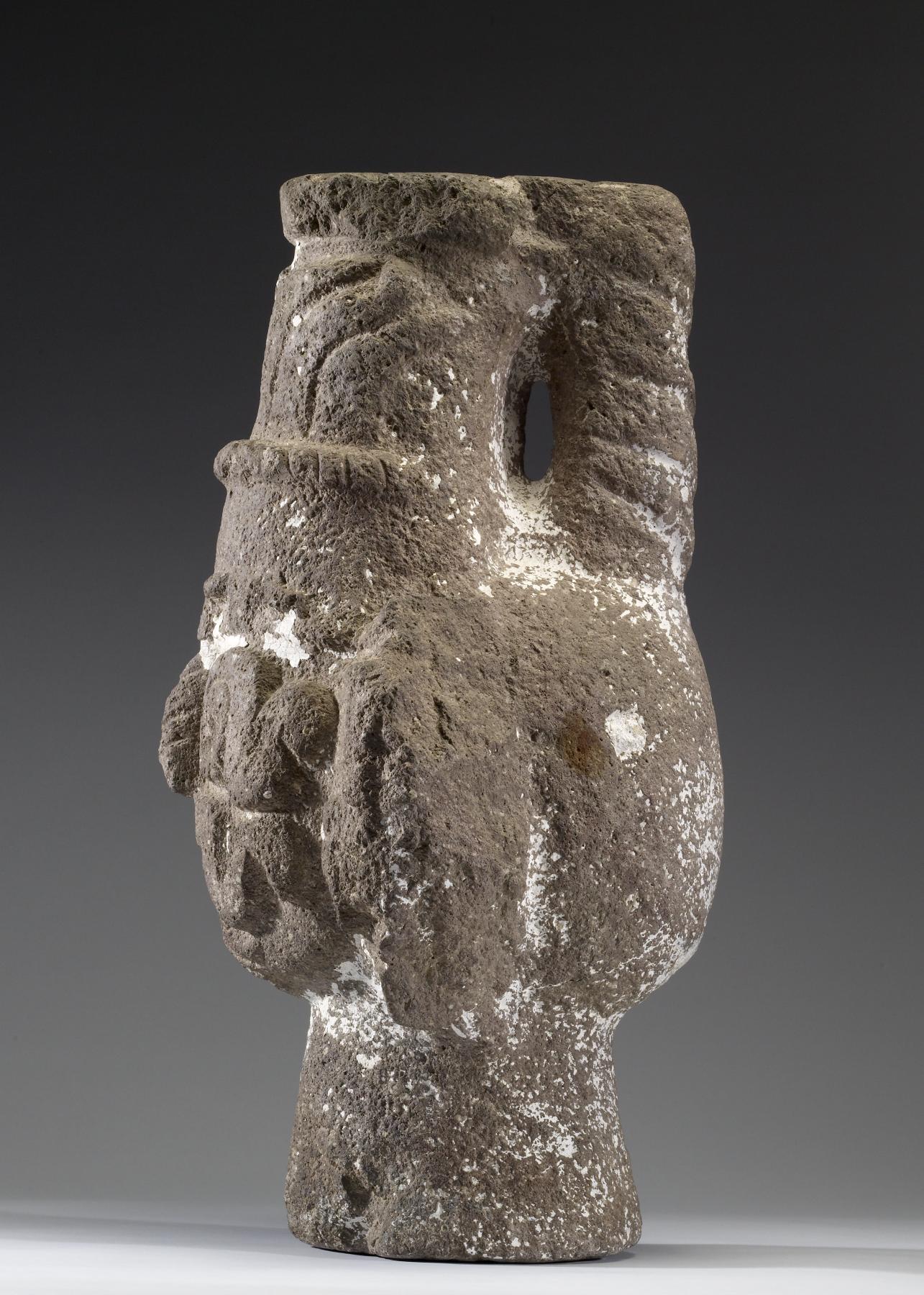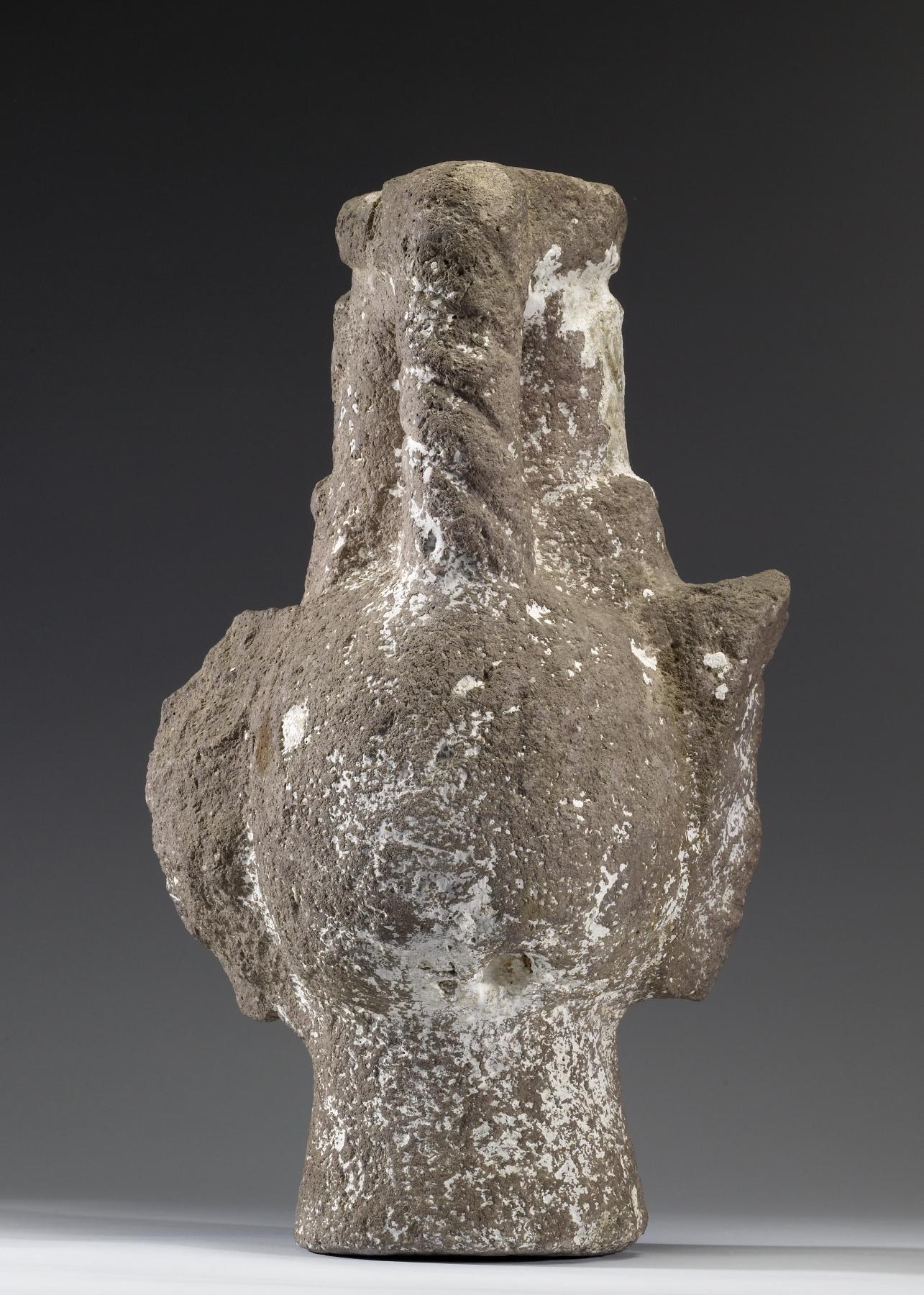Sculpture of Tlaloc, God of Water
(Ancient Americas )
One element of the strategic brilliance of the Mexica political machine was its incorporation of conquered towns' local deities into the imperial pantheon, its two primary gods being their patron deity Huitzilopochtli and Tlaloc, the deity of rain and water, whose worship was very old and widespread. By integrating local ideologies with that of the Mexica state, the Aztecs assimilated disparate groups into their expanding social, political, and economic structures. Such cultural absorbtion is attested in many artworks, foremost being the myriad sculptures of Tlaloc produced throughout Mexico. These portrayals range from the finest artistry to relatively crude carvings, the latter often found in village contexts or at ritual springs or mountain shrines associated with the deity. Many were covered with stucco and painted blue, the color of rain. This example features iconography typically associated with the deity: a wide headband, a crownlike headdress composed of long strips of paper, a folded paper fan behind the head (only a fragment survives on the proper right side of the sculpture), circular eye rings, and a mustache-like upper lip. The Mexica particularly associated Tlaloc with the fertility gods of the previous civilizations of Mesoamerica such as Teotihuacan.
Provenance
Provenance (from the French provenir, 'to come from/forth') is the chronology of the ownership, custody, or location of a historical object. Learn more about provenance at the Walters.
Stendahl Galleries, Los Angeles [date and mode of acquisition unknown]; John G. Bourne, August 17, 1945, by purchase. Given to Walters Art Museum, 2014
Exhibitions
| 2012-2013 | Exploring Art of the Ancient Americas: The John Bourne Collection Gift. The Walters Art Museum, Baltimore; Frist Center for the Visual Arts, Nashville. |
Geographies
Mexico (Place of Origin)
Measurements
H: 19 3/4 x W: 11 5/16 x D: 10 13/16 in. (50.2 x 28.8 x 27.5 cm)
Credit Line
Gift of John G. Bourne, 2014
Location in Museum
Not on view
Accession Number
In libraries, galleries, museums, and archives, an accession number is a unique identifier assigned to each object in the collection.
In libraries, galleries, museums, and archives, an accession number is a unique identifier assigned to each object in the collection.
2009.20.201












